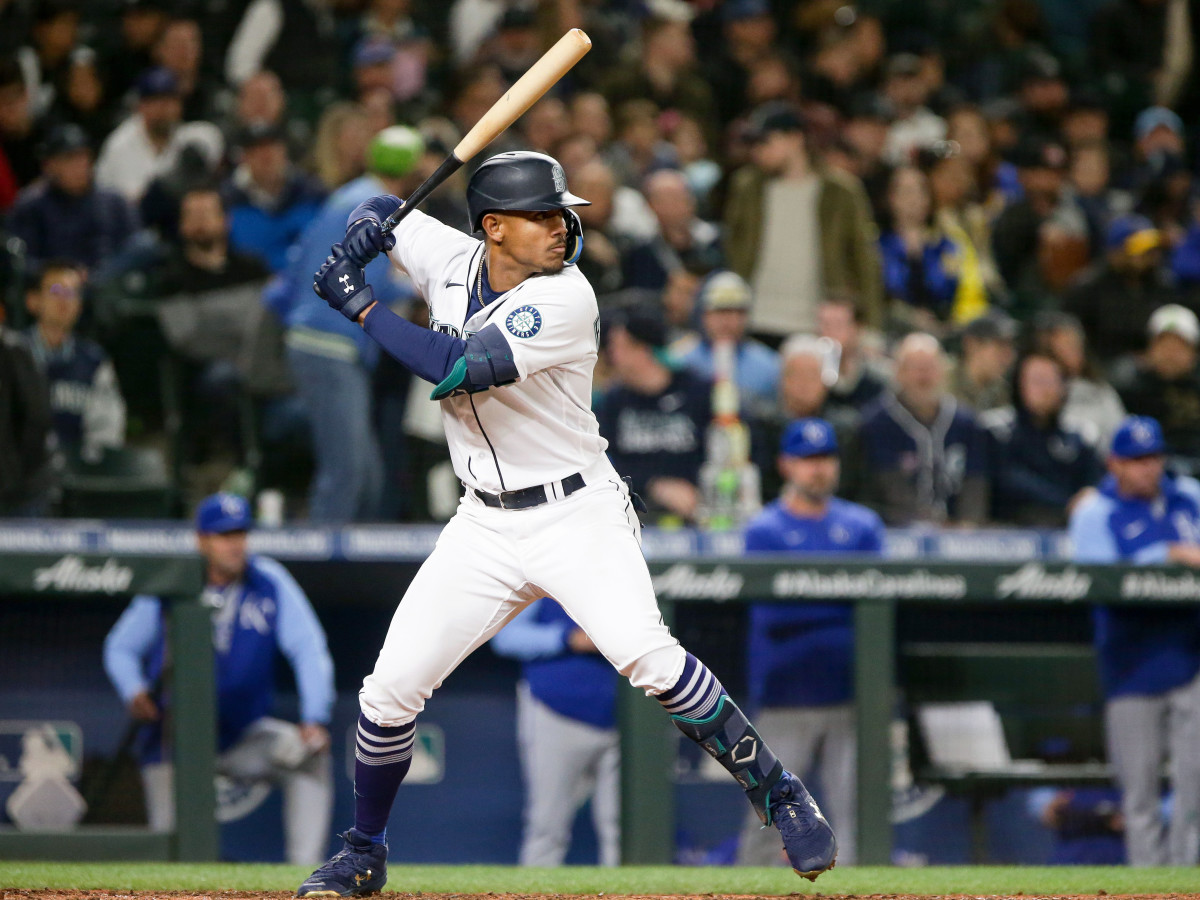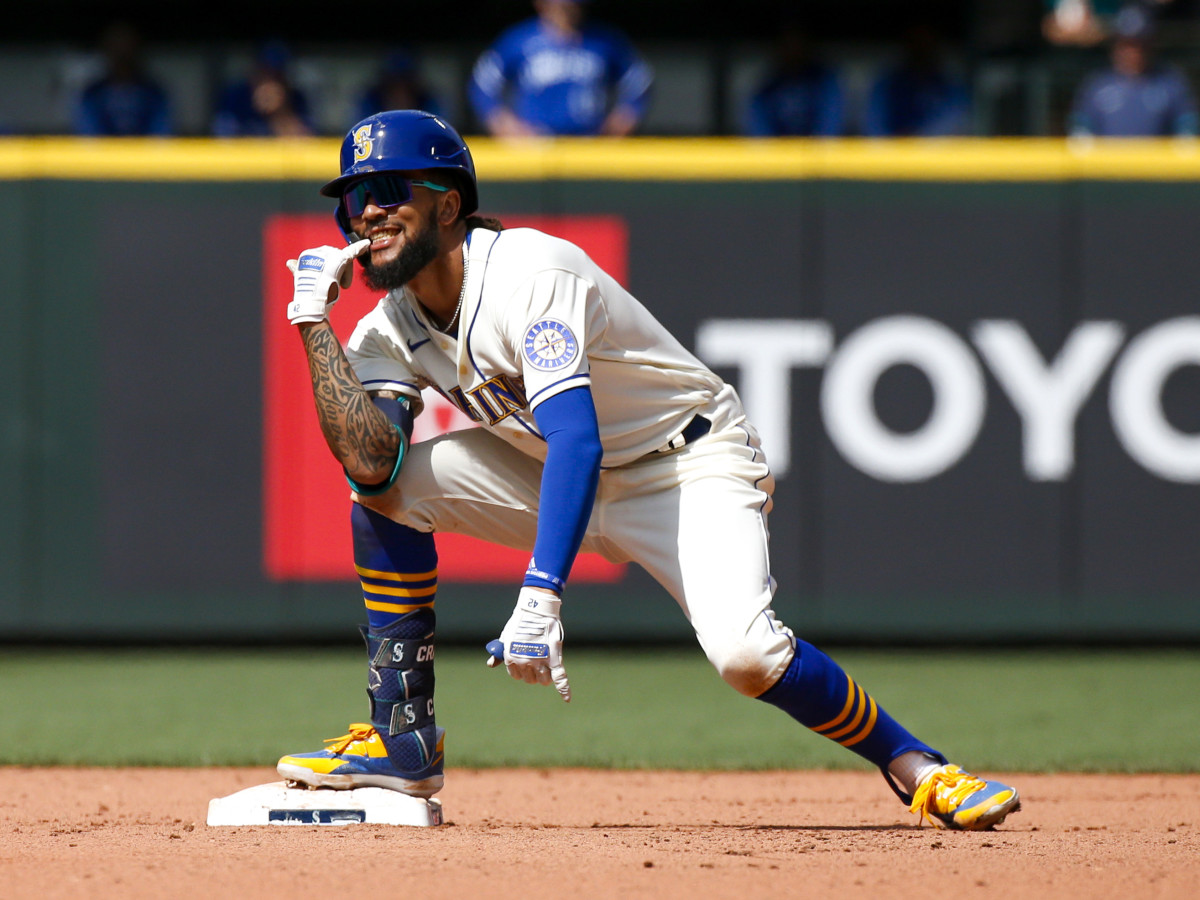The Mariners’ Offense Is Much Improved, and It’s Only Getting Better

Welcome to The Opener, where every weekday morning during the regular season you’ll get a fresh, topical story to start your day from one of SI.com’s MLB writers.
On Sunday, Mariners rookie Julio Rodríguez did something remarkable: He hit a home run.
The three-run blast was notable not only because it was the first in the highly touted rookie’s big league career, but because it gave Seattle a 5–0 lead over the Marlins, which would be more than enough in an eventual 7–3 victory. To date, Rodríguez and fellow top outfield prospect, Jarred Kelenic, haven’t adapted quickly to big league pitching. But it hasn’t much mattered, because this year’s Mariners lineup has done something last year’s largely couldn’t: score runs in bunches.

The Mariners surprised many last year by winning 90 games and staying in the American League playoff hunt until the last day of the regular season. They did so despite being outscored on the year by 51 runs and trotting out a lineup that ranked at or near the bottom in several offensive categories. A month into the new season—and with some new (and familiar) faces in the mix—that does not appear to be the case in 2022.
In 2021, Seattle had the lowest batting average in the majors (.226), fourth-highest strikeout rate (24.8%) and fifth-lowest slugging percentage (.385). It averaged 4.30 runs per game; only three American League teams were worse at scoring. Of the 12 hitters on the team who had more than 150 plate appearances in ’21, only five had a wRC+ above league average (100). Four of them are back in ’22: Ty France (129 wRC+ in ’21), Mitch Haniger (120), J.P. Crawford (103) and Luis Torrens (101).
To this point in 2022, runs have been much less difficult to come by. Despite getting shut out Monday night for the third time this season, the Mariners rank fourth in the AL in scoring (4.43 runs per game) and fourth in the majors (second in the AL) with a 120 wRC+. They also own MLB’s highest walk rate (10.7%), offering at least a higher floor of production by way of getting on base more frequently.
There have been crucial individual performances that have ignited Seattle’s hot offensive start for the first month. But from a broader perspective, the changes can be gleaned in some key areas. First of all, the Mariners are putting the ball in play more often. They ranked 21st in the majors in contact rate last season (75.3%), and now rank 11th in that category in 2022 entering Tuesday (76.5%). More contact, naturally, has led to fewer strikeouts: Seattle hitters have struck out 21.6% of the time, ninth-fewest in MLB.
Frequency of contact is one thing, but the quality of that contact is arguably more important. Seattle’s line-drive rate (19.2%) was the third-lowest of all teams in 2021, and its hard-hit rate (30.7%) ranked 26th. This year, line drives represent 22.7% of the Mariners’ batted balls—the fifth-highest mark in the league—while their hard-hit rate (30.2%) is tied for ninth.
But if Rodríguez and Kelenic are still getting their feet wet, who’s leading the charge for this resurgence? In short, everybody, but there have been a few key players that have made big strides. Always lauded for his defense, J.P. Crawford has been a completely changed man in the batter’s box. The 2020 Gold Glove winner has 11 extra-base hits through his first 23 games after posting a career-high 46 last season. His expected batting average of .335 is the 10th-highest among qualified hitters, and he’s cut his strikeout rate down to a minuscule 10.4% while posting a career-best 12.5% walk rate.

Pitch recognition undoubtedly has been a key factor in Crawford’s breakout, but more important, he has changed how he attacks pitches when he actually swings. Once more of a slap hitter who sprayed the ball to all fields, Crawford has embraced pulling the ball far more often than he has to this point in his career. From 2017 to ’21, Crawford hit the ball to the opposite field 28.8% of the time. So far in ’22, that number is down to 18.3%. His pull percentage has jumped from 33.1% entering this season to 42.3%.
Of course, Crawford isn’t the only one who’s made big strides since last season. Ty France remains a contact-heavy hitter, but has refined his approach and is now punishing breaking balls. He’s hitting .351 against breaking pitches to this point after posting a .256 mark against them last year. New third baseman Eugenio Suárez has looked more like his old self after a rough final two seasons in Cincinnati. He still strikes out a lot (29.8%), but hasn’t been quite as pull-happy as he used to be. As a result, his BABIP has improved to a respectable .275 after lagging behind at .221 from 2020 to ’21.
These offensive strides come despite the aforementioned sluggish starts from Rodríguez and Kelenic, but also a more established star like Jesse Winker. Since 2017 (his rookie year), Winker ranks 12th among outfielders with a 130 wRC+, outpacing guys like Michael Brantley, Cody Bellinger, Nick Castellanos and teammate Mitch Haniger. So far, his production has been abysmal, though the underlying metrics—including career bests in walk rate (18.4%), strikeout rate (12.2%), expected batting average (.325) and expected wOBA (.405)—suggest that a return to form isn’t far off. If and when Winker starts producing at the plate—and if Kelenic and Rodríguez join him—an already deep lineup will get even more dangerous.
And actually, despite his unimpressive .238/.307/.325 slash line for the year, J-Rod already appears to have adjusted to the big leagues. He notched his first multihit game on April 22, and in the 10 games since, he’s hitting .361/.425/.528.
The Mariners nearly defied the odds to end a 20-year postseason drought last season with a collection of mediocre (or worse) bats and a dominant bullpen that was placed in high-leverage pressure cookers on a nightly basis. Ultimately, the margin for error was too thin to overcome. With a more potent offense, perhaps there will be fewer slim leads to cling to in the late innings—which would be a good thing in the long run if Seattle’s newfound high-scoring ways are here to stay.
More MLB Coverage:
• Ignore Trevor Bauer
• The Biggest Surprises of the 2022 MLB Season So Far
• MLB Power Rankings: Angels Surge Behind Baseball’s Best Offense
• Inside Anthony Rizzo’s Resurgence With the Yankees
• There’s No Grand Conspiracy Behind the Mets’ Getting Hit by Pitches
